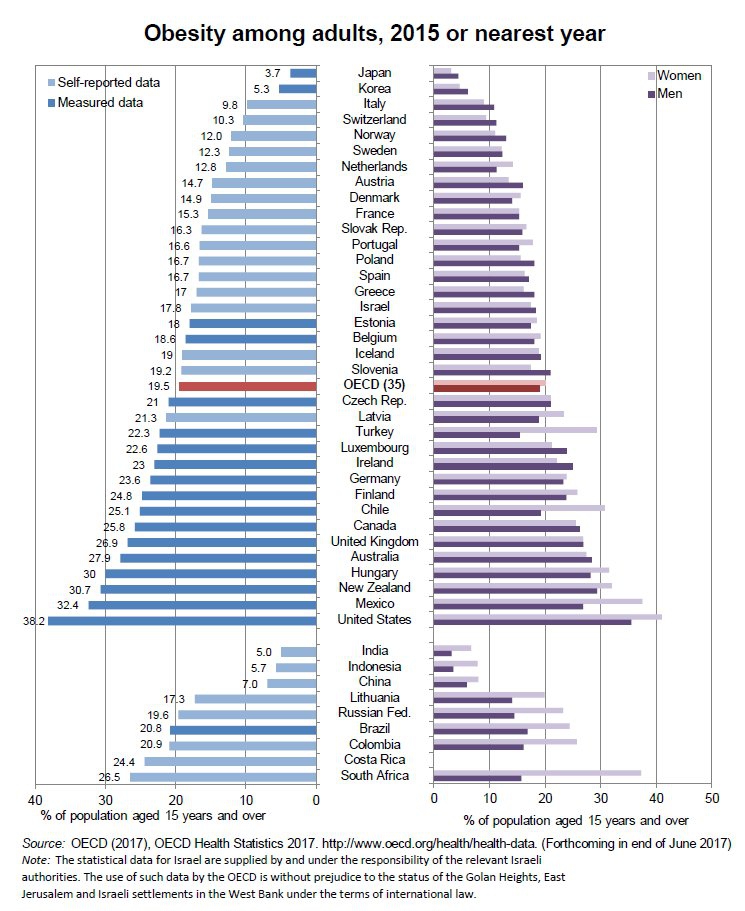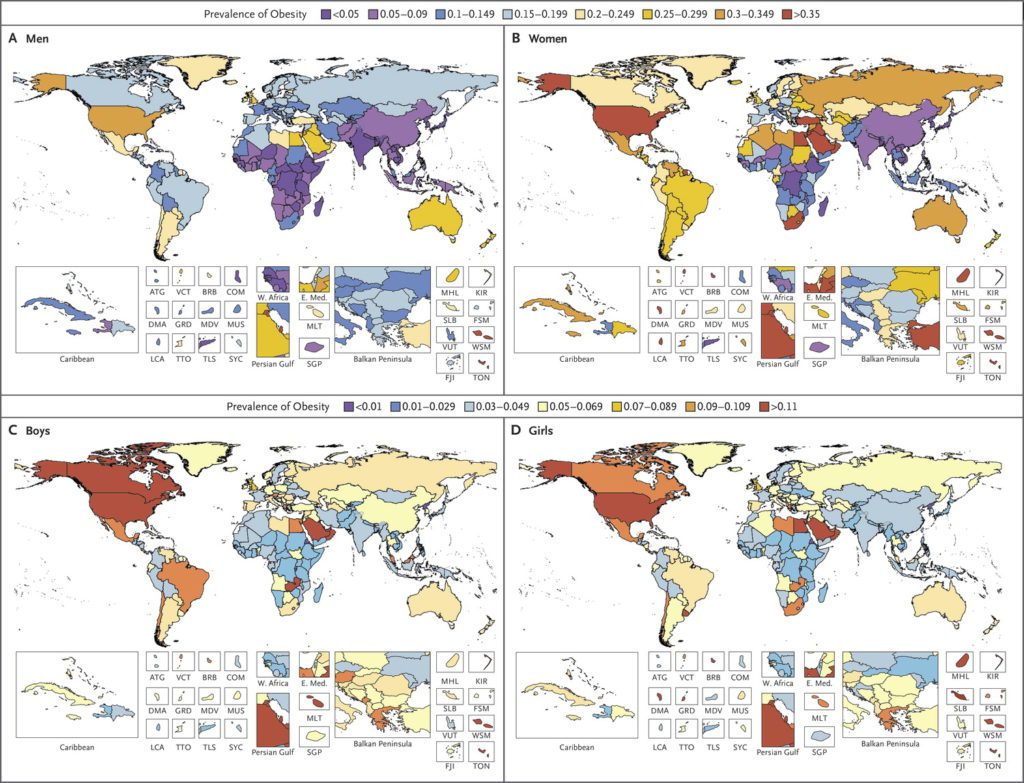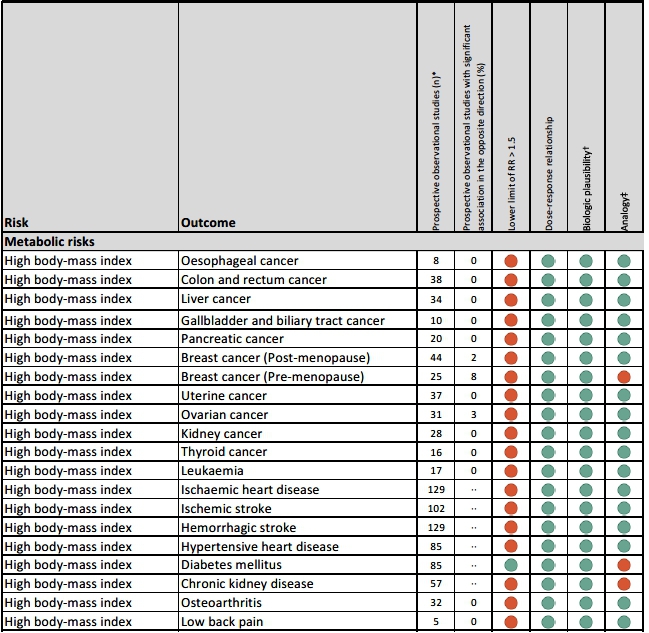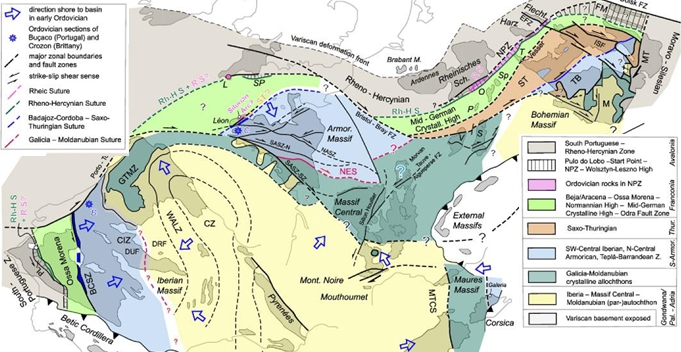
Obesity has become a real worldwide epidemic with an estimated 700 million people being so classified. A new report in the latest issue of New England Journal of Medicine highlights the issues and the conclusion are truly alarming. This collaborative (~200 researchers) research (funded by the Gates foundation) evaluated the trends in the prevalence of the overweight and obesity as well as the patterns of deaths and disability-adjusted life-years related to high BMI, according to age and sex, in 195 countries. This analysis supersedes all previous results from the Global Burden of Disease study with respect to high BMI by comprehensively reanalyzing all data from 1990 through 2015 using consistent methods and definitions.
Here are their key findings
- In 2015, an estimated 604 million adults and 108 million children worldwide were obese. That represents about 12% of all adults and 5% of all children.
- The prevalence of obesity doubled in 73 countries between 1980 and 2015 and continuously increased in most of the other countries.
- China and India had the highest number of obese children. China and the U.S. had the highest number of obese adults.
- Excess body weight accounted for about 4 million deaths — or 7.1% of all deaths — in 2015.
- Almost 70 percent of deaths related to a high BMI were due to cardiovascular disease.
- The study finds evidence that having a high BMI causes leukemia and several types of cancer, including cancers of the esophagus, liver, breast, uterus, ovary, kidney and thyroid.
- In rich and poor countries, obesity rates increased, indicating “the problem is not simply a function of income or wealth. Changes in the food environment and food systems are probably major drivers. Increased availability, accessibility, and affordability of energy-dense foods, along with intense marketing of such foods, could explain excess energy intake and weight gain among different populations. The reduced opportunities for physical activity that have followed urbanization and other changes in the built environment have also been considered as potential drivers; however, these changes generally preceded the global increase in obesity and are less likely to be major contributors.”
The level of obesity across the western world is nothing short of alarming and will place enormous strain on an already burdened health case system. Not surprisingly the USA is the fattest nation on the planet with a staggering 38% of the population over 15 YO being classified as obese and the percentage of obese women is even higher. The USA also holds the record for age-standardised childhood obesity, at 12.7%. Australia, Canada, Mexico, UK and several European nations are not far behind.
Age Standardized Prevalence of Obesity Worldwide in 2015
More alarmingly there has been a rapid increase in obesity levels across the world, driven by an abundance of high-energy food and effective marketing.
Relative Percent Change in Obesity Prevalence between 1980 and 2015 for Males >20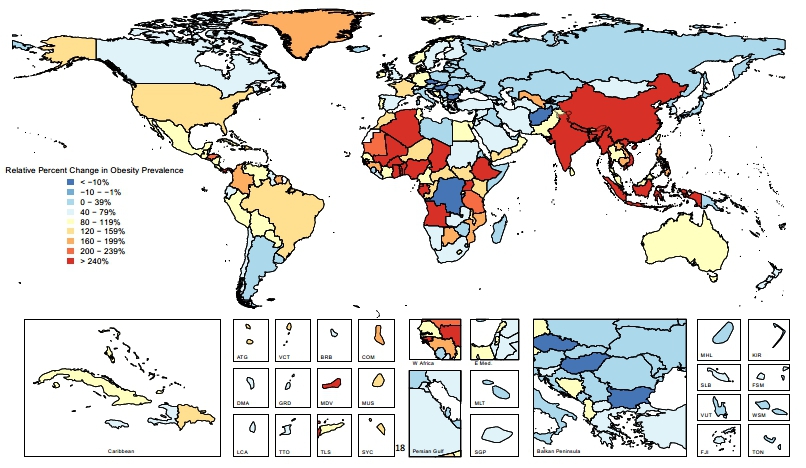
Relative Percent Change in Obesity Prevalence between 1980 and 2015 for Feales >20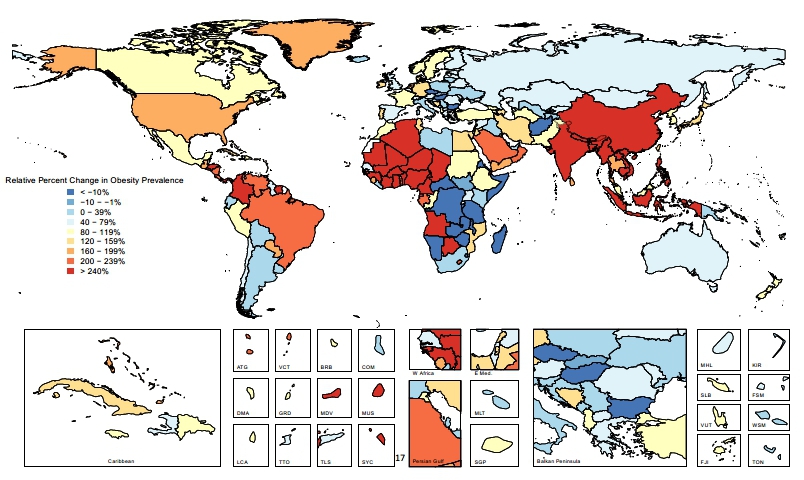
It just seems that when large portions of the human population have ready access to food they simply cannot stop themselves from eating. A portion of the issue is likely genetics. Humans in cold climates that more efficiently converted calories into fat-stores were better able to survive the winter and better able to care for their offspring and had a higher chance of passing on their genes.
This advantage however fails the host when there is an inexhaustible supply of high calorific value food and exhaustible supply of will power or intelligence.
Health Effects of Obesity
There are consequences for obesity as well all know and these consequences are very expensive for the public health systems and devastating for the individuals concerned.
Epidemiological evidence supporting causality between high BMI and disease
A Solution
Education has simply failed. In the west for too long, at schools and across the media excessive consumption and obesity have been major public health issues. The shopkeepers have done a fantastic job in generating products and spaces which are appealing to consumers. They have rarely acted in the public interest for example, adding salt and excessive sugar to breakfast cereals because it results in consumer addiction.
It is time for somewhat more dramatic measures. Western government could instigate 20% sugar and fat taxes on fast foods (in addition to existing consumer taxes) and reduce consumer taxes to zero on healthy alternatives for example unprocessed fruit and vegetables. If this fails in addition to education then health care billing related to BMI could be a more draconian measure. It is time to tax fat and reduce obesity.
Original Research
BACKGROUND
Although the rising pandemic of obesity has received major attention in many countries, the effects of this attention on trends and the disease burden of obesity remain uncertain.
METHODS
We analyzed data from 68.5 million persons to assess the trends in the prevalence of overweight and obesity among children and adults between 1980 and 2015. Using the Global Burden of Disease study data and methods, we also quantified the burden of disease related to high body-mass index (BMI), according to age, sex, cause, and BMI in 195 countries between 1990 and 2015.
RESULTS
In 2015, a total of 107.7 million children and 603.7 million adults were obese. Since 1980, the prevalence of obesity has doubled in more than 70 countries and has continuously increased in most other countries. Although the prevalence of obesity among children has been lower than that among adults, the rate of increase in childhood obesity in many countries has been greater than the rate of increase in adult obesity. High BMI accounted for 4.0 million deaths globally, nearly 40% of which occurred in persons who were not obese. More than two thirds of deaths related to high BMI were due to cardiovascular disease. The disease burden related to high BMI has increased since 1990; however, the rate of this increase has been attenuated owing to decreases in underlying rates of death from cardiovascular disease.
CONCLUSIONS
The rapid increase in the prevalence and disease burden of elevated BMI highlights the need for continued focus on surveillance of BMI and identification, implementation, and evaluation of evidence-based interventions to address this problem. (Funded by the Bill and Melinda Gates Foundation.)
